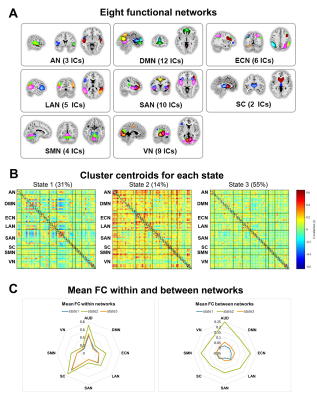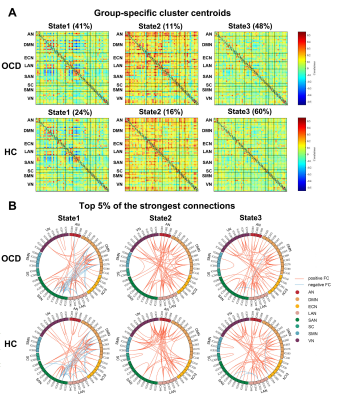Lekai Luo1, Qian Li1, Wanfang You1, Yuxia Wang1, Yanchun Yang2, Qiyong Gong1, and Fei Li1
1Huaxi MR Research Centre (HMRRC), Department of Radiology, West China Hospital of Sichuan University, Chengdu, China, 2Psychiatry, West China Hospital of Sichuan University, Chengdu, China
1Huaxi MR Research Centre (HMRRC), Department of Radiology, West China Hospital of Sichuan University, Chengdu, China, 2Psychiatry, West China Hospital of Sichuan University, Chengdu, China
We found clinically relevant aberrant dynamic brain activity in OCD. Increased functional segregation among networks and impaired functional flexibility in connections among brain regions in DMN and SAN may play important roles in the neuropathology of OCD.

Fig. 1. A.
Eight functional networks: auditory network (AN), default mode network (DMN),
executive control network (ECN), language network (LAN), salience network
(SAN), subcortical network (SC), sensorimotor network (SMN), and visual network
(VN). B. Cluster centroids for each
state. C. The radar map of the mean
FC strength within and between networks for three states.
